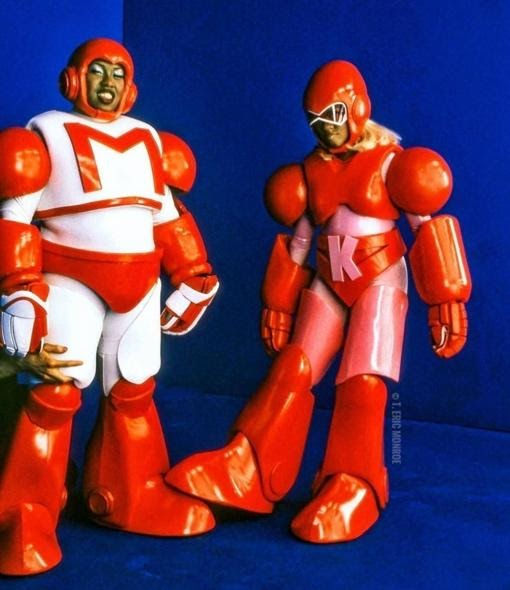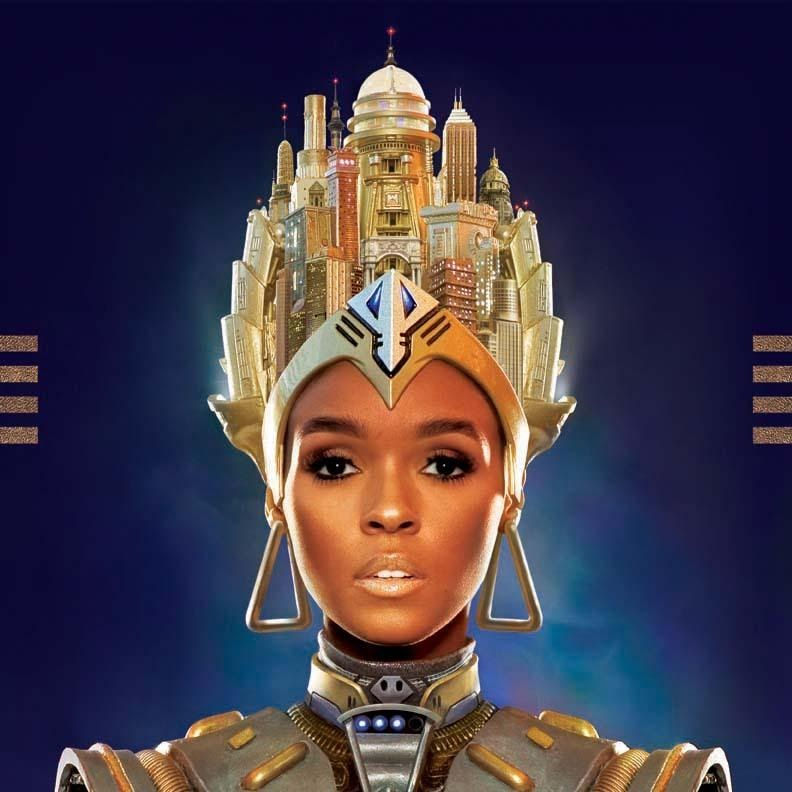Afrofuturism in Music
- Nicole Ndlovu

- Apr 12, 2021
- 4 min read
By Nicole Ndlovu
After the success of Black Panther, many people have set their eyes on the theme of Afrofuturism and what it entailed. This genre of art form is in no way new, as it transcends further than just within Film, its presence prevalent within; Literature, Fashion, many more but specifically in Music. Various artists making their own technology-heavy, futuristic, dystopian universes and presenting through music videos.
It would not make sense to talk about Afrofuturist artists and skip over Missy Elliot, one of the main artists to bring the concept to mainstream media. From the metallic outfits featured in both her music videos and live performances, to her lyrics, Missy Elliot presents the concept of Afrofuturism within the genre of Hip-Hop which allowed her to show her own uniqueness. Sock It 2 Me starring Lil’ Kim and Da Brat in the music video -and Da Brat on the track- serves as her first video by Missy to present a futuristic lens.


With Star Wars and The Matrix being widely popular Sci-Fi mediums in film, representation for Black people specifically was sought after within this genre. Within music Missy uses many different aspects of sci-fi themes to present her visionaries to listeners. Hinting towards what is unknown to us about the future by using superpowers, space itself, outlandish costuming and other elements like the musical aspects and techniques within the music itself to bring these ideas to life.
The rise in popularity in 3-member girl groups such as Blaque, 3LW and TLC also brought in this concept of Afrofuturism as they faced it head on. Blaque’s intro track for their self-titled album includes a play in on the sci-fi theme.
“System loading / Ready / Welcome and thank you for choosing /
The Bionic Linium Acoustic Quadrosonic Sound System, or in short, Blaque /
Your selections have been digitally mastered / And ready for playback /
So prepare for the ultimate entertainment experience.”
The words are accompanied with classic sci-fi sounds following a spaceship and advanced technology narrative which paired well with the trio’s debut album photoshoot. The futuristic aspect upon album covers for all three of these groups was present; giving a reason as to why they were popular in their primes.



People like seeing ‘what could’ve been’ if colonialism hadn’t exploited countries within Africa and if Africa as a continent grew naturally. The Afrocentric-mixed-with a Dystopian imagery lessens the marginalisation and shows how wide the diaspora is; contrasting with how cultures with Africa are portrayed in modern media today.
Outside of Music this was seen with Black Panther where the Costume Designer Ruth E. Carter had people on the ground across Africa looking for material for the garments worn by the Actors, wanting it to be as authentic as possible rather than just strictly commercialised and imaginary.
With newer artists, one being FKA twigs, the visionaries within their music videos serve as modern-day examples of the genre of Afrofuturism. In the music video for Two Weeks, FKA twigs hints towards an Egyptian feel, portrayed by the gold tones around her, crown atop her head and the throne twigs finds herself situated on. Despite not moving from the throne, the dominance and position does not go misplaced but emphasised by her clones- the dancers- and the pouring of water to one of them; the Goddess portrayal showing the Afrofuturism take within the elegant music video.
Janelle Monáe to many is pioneer for Afrofuturism coining the term in interviews and popularising it through her concept of robotics and androids- seeing them as a way to represent minorities in real life. A quote from Filmmaker and Author Ytasha Womack explains why so many people see Janelle Monáe’s take on Afrofuturism to be seen as an entity and not just a Black personnel concept:
"I think that's why a lot of people enjoy Janelle Monáe, because she talks about this android, this 'other'. The symbolism is understood." "A lot of people can associate with this concept of otherness for a whole host of reasons, many of which are not racial, so there's a connection there."

She presents her take of Afrofuturism through an album trilogy: The Archandroid, Electric Lady and Dirty Computer (as well as the Eps released in beforehand in the lead up). The dystopian universe, crafted over the course of 15 years, sees the perspective of Monáe’s android alter-ego Cindi Mayweather who is sent back from the future to free the city of Metropolis as a secret society is seeking to destroy love and freedom amongst the androids. Aja Romano writes a more in-depth piece delving into the universe Monáe created which can be found here. The creativity shown by Janelle Monáe truly shows how Afrofuturism transcends to something bigger than itself and how diverse the genre can be.
Despite the few artists mentioned here, there have been many musicians who have delved into the concept of Afrofuturism and presented their own takes of it through their music videos and album photoshoots; honourable mentions being Erykah Badu, Outkast, Sun Ra and Ibaaku. One thing for certain about Afrofuturism is that it brings in a sense of community amongst Black art; whether it be within Music, Literature, Film and various others.




Comments